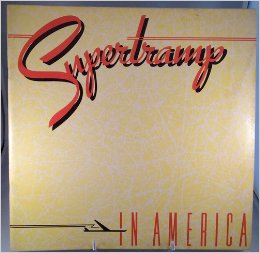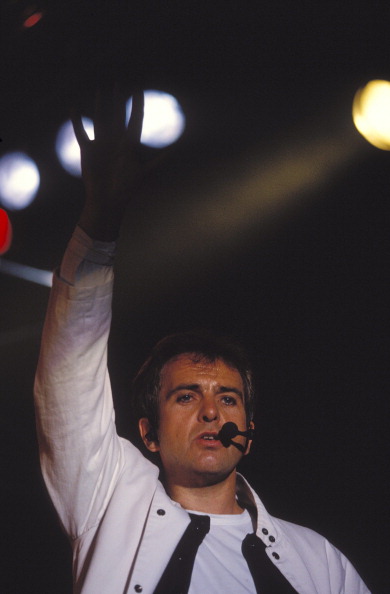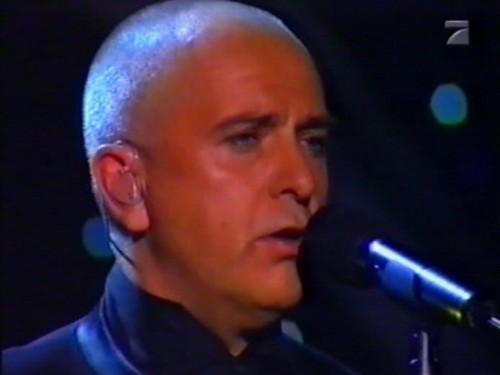Marking Time with Music
(note: this originally posted on www.planetback.com in 2008. I've editted it for this posting)
 Quick. What’s the first thing that comes to mind when I mention the year 1979? A birthday? A graduation? Your first kiss? A song by the Smashing Pumpkins? If you’re like me, and God help you if you are, your mental timeline is marked not so much by life’s personal milestones, but by album release dates. It’s my way of attaining order in a random universe.
Quick. What’s the first thing that comes to mind when I mention the year 1979? A birthday? A graduation? Your first kiss? A song by the Smashing Pumpkins? If you’re like me, and God help you if you are, your mental timeline is marked not so much by life’s personal milestones, but by album release dates. It’s my way of attaining order in a random universe.
Take the year 1975. Springsteen’s Born To Run and Led Zeppelin’s Physical Graffiti come to mind, though I was only seven years old that year. Age doesn’t really matter when it comes to marking time (at least it didn’t until I turned forty); I’ve retroactively pegged years from long before my birth. 1954? Bill Haley’s “Rock Around The Clock” (not an album, per se, but you get the idea). 1967? The Beatles’ St. Pepper and Hendrix’s Are You Experienced. Of course, more recent years have the added benefit of intertwining personal experience with album release dates. Peter Gabriel’s So and Paul Simon’s Graceland came out the year of my high school graduation, and Ben Folds Five and Alanis Morissette both debuted albums in 1995, the year I was married.
1979 stirs up memories of my very first album purchases. I started boldly, with a live double album from Aerosmith, graduated to Supertramp’s Crime of the Century and Led Zeppelin’s In Through The Out Door, and finished off the year with Pink Floyd’s magnum opus, The Wall. This was the album that had everybody talking. Whatever side of the Floyd fence you fell on, there was no disputing The Wall’s significance.
Memories of my family’s trip to Florida the following spring are inextricably linked to the unwavering play lists of rock stations from Milwaukee to Tampa: “All of My Love,” from Zeppelin, “The Devil Went Down To Georgia” by Charlie Daniels (with the phrase “son of a gun” replacing “son of a bitch” for radio play – oh the innocence!), and the ubiquitous “Another Brick In The Wall, Part 2.” This is the Floyd song that features a disco beat and a children’s choir singing “We don’t need no education” (both moves a stroke of production genius). It was an unmelodic piece, almost childish, but that didn’t stop me from buying the sheet music to expand by blossoming piano repertoire. When I handed the music to my appalled piano teacher, Mrs. Trotier, she produced a sigh that could have signified the end of society, but to her credit, she helped me plod my way through the song, deciphering the complicated rhythms of David Gilmour’s transcribed guitar solo.
Meanwhile, schoolteachers from all around the country feared mutiny. The lyrics to “Another Brick In The Wall, Part 2” clearly had appeal to any student with an ounce of deviance, but my sixth grade teacher, Mr. Middlestead, didn’t quite see it that way. He decided to facilitate a class discussion on the topic, an admirable move except when considering his audience. He copied the song’s lyrics on the chalkboard at the front of the classroom and asked the students to read along while the song played. After pressing stop on the tape player, he asked, “What is it about this song that you find appealing?”
We offered nothing except shoulder shrugs and blank stares. None of us really knew why we liked the song. We just did. It was on the radio, and it was sort of funny. But no one was brave enough to say so. Finally, after watching my teacher die a slow death in front of the classroom, something inside me – probably vanity – provoked me to speak up.
“This song isn’t even as good as the other two. Part 3 is way better.” I was referring to an almost identical song with slightly different lyrics on the album’s second side.
My teacher’s eyes widened. “That’s what I’m trying to get at. You think this is the worst of the three ‘Another Brick In The Wall’ songs, and yet this is the one that’s attracted so much attention. Why?”
“I don’t know…but Part 3 is really cool. It starts out with a guy smashing his TV!”
I raised my hands to mimic the action, but halted when Mr. Middlestead placed a hand on his forehead. Then, starting to sense my own death, I turned to my classmates for support and distinctly remember Jon Lewis giving me a look that he’d previously reserved for the class dork. I had just doubled the number of dorks in our classroom and completely negated any crumb of respect I’d garnered from my classmates all year.
Damn you, Roger Waters!
So what’s the upshot of all this? Nothing really, except to say that while 1979 is a highlight in my mental timeline, and could be for almost any music fan, I don’t imagine today’s kids will look back at the year 2014 with the same fondness. And that’s not just because I’m an old guy hankering for the old days; today’s kids are already wallowing in the past. Look around and you’ll see teenagers wearing t-shirts with the logos from Zeppelin, Rush, The Who, Nivana and the Stones. It reminds me of a conversation I had at a party back in 2008 when a familiar song began to play in the background.
“Oh, I like this song,” a woman said.
“Yeah, Warren Zevon,” I said.
“Who’s Warren Zevon?”
“The guy who does this song.”
“No. It’s someone else. Kid somebody?”
“It’s Warren Zevon.”
And then a voice began singing an alternative melody right on top of Warren Zevon’s original classic! So all 2008 had going for it was a hit by Kid Rock based on based on samples of two songs from long ago: Lynyrd Skynyrd’s “Sweet Home Alabama” from 1974 and Warren Zevon’s “Werewolves of London,” from 1978.
Wallowing in the past.


